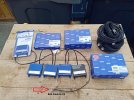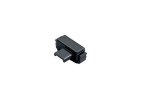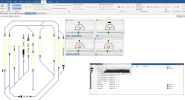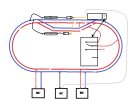Ah! with you now, other than daisy chaining the GND wire to become a Common between the A & B contacts, which in itself will reduce the wire count, not significantly, but any reduction is better than nothing.
Massoth do have these available, the PZB/IR Signal decoder and the ITC/IR Receiver, the question of the sheer economics may make this impractical.
Alternatively, I moved from using Track Contacts to Track Detection, again the practical considerations of altering and fitting Isolating sections may be a step to far.
The Track Detection system, there is a reduction in the amount of cable, BUT does need careful thought and consideration from an operational point of view, not a simple task to rectify if not thought through in the first instance
Although saying the above, it DOES provide alternative scope for Automation and Animation, which the Track Contact system cannot provide, well not as they are provided by Massoth, although anyone who is prepared to self build alternative Track Contacts, could utilise alternative Automation and Animation routines.
Any method as above will require additional work and expense, unfortunately no simple solution is at present available, best to hope for, is to contain the Rats Nest of wires to a manageable level!
Given all the above, I would still always install some method for Automation and Animation, makes for interesting and surprising operating sessions!






